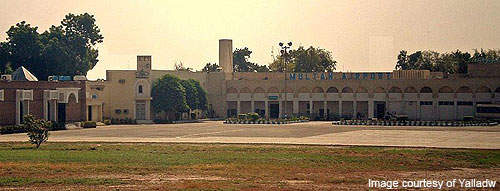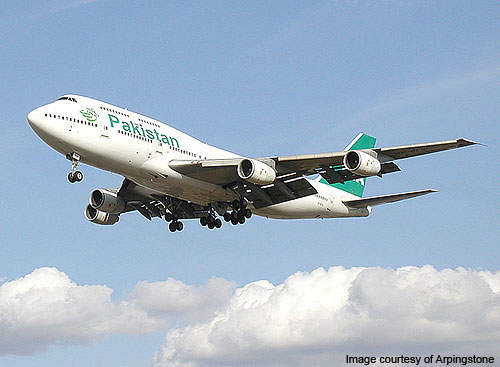Multan International Airport is located at Multan in Punjab, Pakistan. It is being operated by Civil Aviation Authority of Pakistan. The airport is also known as Muhammad Bin Qasim International Airport and serves the areas of Multan, Pakpattan, Sahiwal, Muzaffargarh, Vehari, Rajanpur and Khanewal.
The airport land was initially used by the Royal Air Force to fly in and out of the Multan region. Later, in 1934, Imperial Airways used the airport for passenger aircraft flights. In 1938, Imperial Airways started its regular operations and since then the Multan area has gained status as a strategic position.
Multan Flying Club was formed after Pakistan gained independence in 1947, and was followed by PIA (Pakistan International Airlines) operations at the airport in 1957.
In 1999, the airport gained international status.
Expansions
In order to meet international standards, local government and the Civil Aviation Authority (CAA) initiated a project to upgrade the terminal, runway and apron in 2005.
Initially there were plans to build a new airport facility at a different location. This plan however, failed due to lack of suitable land. Then the project to upgrade the current airport was proposed.
The expansion project is divided into two phases. The first phase of expansion was started in April 2009 and was completed in June 2010. It included expansion of the runway, taxi-way and apron and the works cost around Rs1.8bn. The completion of phase one resulted in supporting wide body aircraft such as Boeing 777, 747 and Airbus. In addition, the number of cargo flights operating also increased, thus producing more revenue.
Phase two broke ground in June 2010. The second phase upgrade works will cost around Rs2.0bn and are expected to be completed by 2012-2013. Modernisation of the new terminal building and other allied facilities will be carried out in the second phase. The terminal building already underwent expansion in 1977. In order to be at par with the technological advancements and improve passenger comfort level, the terminal building will be further upgraded. The modernisation works will involve installation of flight information display systems, CCTV, screening equipment, elevators and boarding bridges in the terminal. In addition, sewerage and signage works will also be included. The allied facilities will consist of a car park to accommodate 550 cars, cabling, and setting up of electric poles and gates.
The whole project was estimated to cost approximately Rs4.5bn, out of which, Rs3.5bn is being contributed by ADP (Automatic Data Processing, Inc.) of CAA and the remaining sum by the Federal Government.
China based contractors Xinjialig-Beixin was awarded the runway expansion contract.
New Multan terminal
The airport has a single passenger terminal which was built in many phases. The terminal consists of international and domestic departures and arrivals areas.
The arrival lounge has the capacity to handle up to 135 passengers and covers an area of 2,993ft. It consists of a few snack shops and a conveyor belt system.
The departures lounge covers an area of 5,169ft² and has the capacity to handle up to 300 passengers.
It consists of a dedicated prayer area, toilet facilities and check-in desk with approximately 50 counters.
The terminal features a CIP lounge which covers an area of 2,400ft² and handles VIP guests travelling through the airport.
A state lounge of 1,200ft² and concourse of 4,200ft² area are also included in the terminal building.
In addition, a briefing area of 2,962ft² which consists of conveyor belt, airline checking counter and baggage packing are part of the terminal.
Runway
The airport has a single runway designated 18/36. The runway is 2,743m long and is surfaced with Bitumen. In 1971, the runway was extended to handle heavier aircraft and more passengers. In 2009, the runway was again upgraded, as a result of which the length and width were increased to 3,200m and 45m respectively.
Air traffic control
In May 2010, CAA undertook the construction of a new air traffic control tower at the airport. The new control tower is expected to meet the technological advancements of new aircraft traffic control systems in the future.
Parking
The airport currently offers 130 parking spaces. It also provides both short and long-term parking options. The VIP car park offers 25 spaces.




